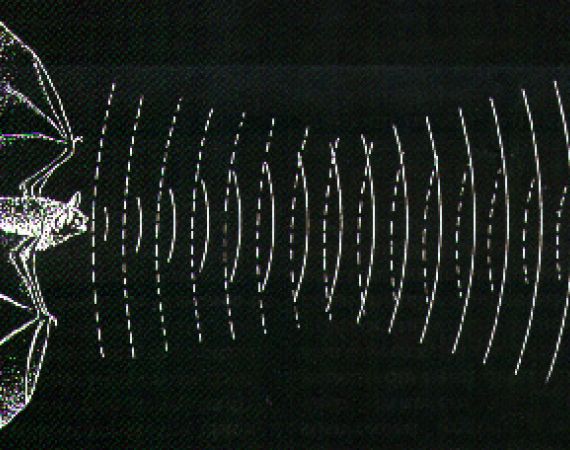Posted on Sun 7 Oct 2012
Initial inspriations

Normal.dotm
0
0
1
314
1795
Kathy Hinde
14
3
2204
12.0
0
false
18 pt
18 pt
0
0
false
false
false
/* Style Definitions */
table.MsoNormalTable
{mso-style-name:"Table Normal";
mso-tstyle-rowband-size:0;
mso-tstyle-colband-size:0;
mso-style-noshow:yes;
mso-style-parent:"";
mso-padding-alt:0cm 5.4pt 0cm 5.4pt;
mso-para-margin:0cm;
mso-para-margin-bottom:.0001pt;
mso-pagination:widow-orphan;
font-size:12.0pt;
font-family:"Times New Roman";
mso-ascii-font-family:Cambria;
mso-ascii-theme-font:minor-latin;
mso-fareast-font-family:"Times New Roman";
mso-fareast-theme-font:minor-fareast;
mso-hansi-font-family:Cambria;
mso-hansi-theme-font:minor-latin;
mso-ansi-language:EN-US;}
This project has grown from my fascination with the methods some animals use sound to navigate and how some animals adapt their sonic behaviour in different environments and situations.
Bats (and other animals) echo locate by emitting high pitched chirps (usually using their vocal chords), then listen to the sonic reflections to create a mental image of their surroundings. This helps them to navigate and find prey in the dark. Some birds have been known to adjust their songs and calls influenced by the sounds in their environment. They may transpose their songs and calls in order to stand out more - being less masked by noise. Insects also use this adaptive method by selecting the most ‘available’ frequencies to chirp at.
In 1968 Alvin Lucier composed Vespers, which uses ‘echo locating’ devices call Sondols (which were developed to help blind people navigate using echo location). They are click-making devices, allowing someone to listen to the reflections of the clicks to actively 'echo locate'. The repeat rate of the click can be manually - as there are specific intervals where the repeat rate can further empasize the reflected echo. I’m a big fan of Lucier’s work and have always been very interested in this piece. Vespers is based on an instruction for performers to explore a space wearing blindfolds, using these Sondols and enhances the performers and audience's acoustic appreciation of the particular space. A few years ago, Nicholas Collins wrote about Vespers in the Wire Magazine, which includes a more detailed description of the piece - the article can be read here.
Vespers seems to be rarely performed, possible due to the difficulty in getting hold of Sondols.
This project, Vocal Migrations, references Vespers, but with the possibility of using the human voice, (or infact any sound) to be translated through the use of a proximity sensors and software. The software will be modelled on echo location, and other sonic behaviour of bats. The performers will not be actually 'actively echo locating' - yet an important aspect of the performance is that each singer needs to listen carefully and intently to each other and the piece as a whole, following a composed structure that allows for improvisation and variation - listening and responding / reflecting.